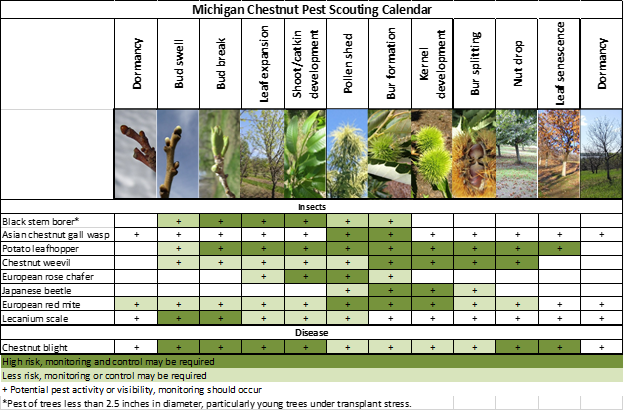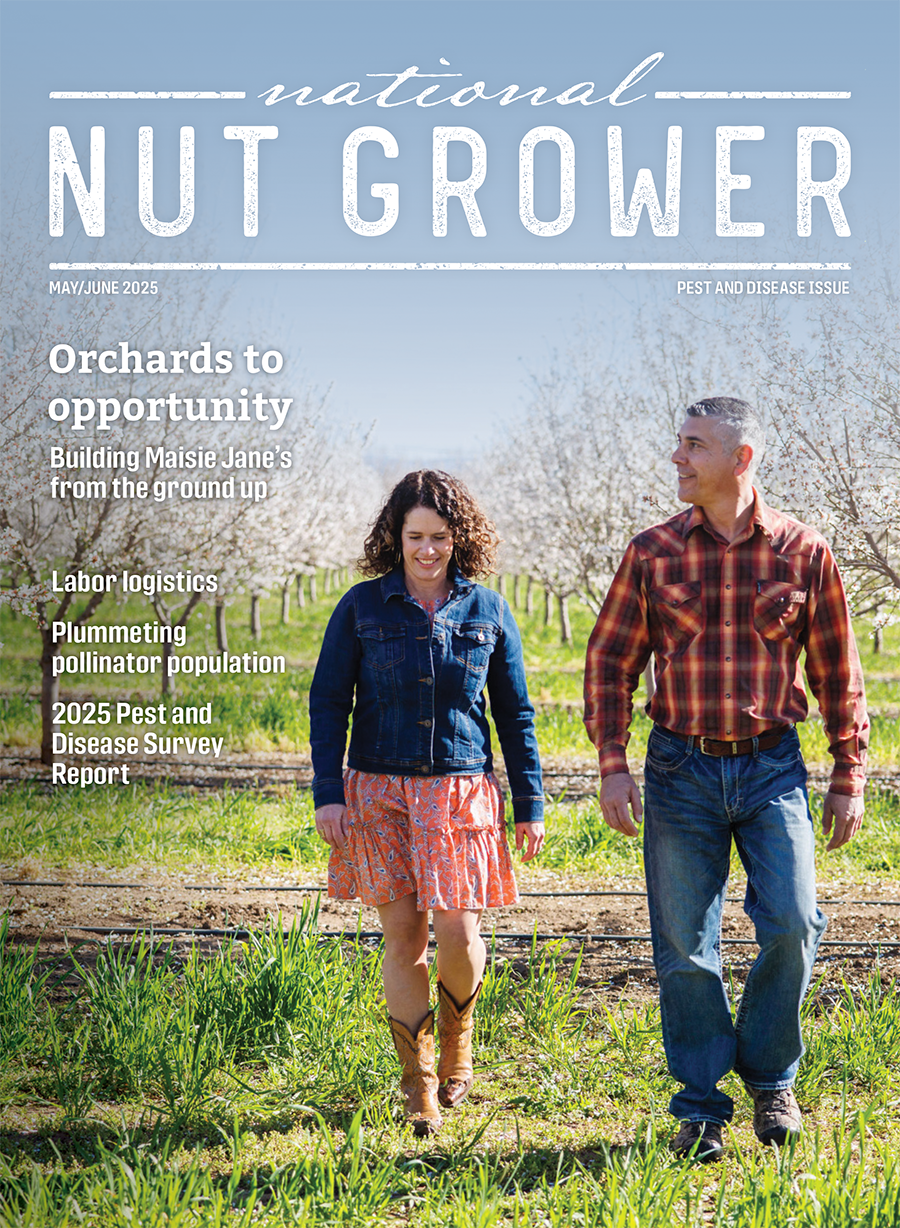
Aug 21, 2023Michigan chestnut growers should lookout for chestnut weevil
Burs are developing and scouting for chestnut weevil should be underway, according to the Michigan chestnut crop report for the week of August 10, reported by Michigan State University Extension’s Erin Lizotte and Rob Sirrine.
“Growers should be scouting for chestnut weevil as kernels develop. The lesser chestnut weevil (Curculio sayi) is an important pest of chestnut in Michigan. Lesser chestnut weevil is native to North America and host-specific, only infesting tree species in the genus Castanea (American chestnut, Chinese chestnut, European chestnut and chinquapin),” according to the researchers.
“Lesser chestnut weevil lay eggs on developing kernels and the resulting larvae feed on and damage the kernel making them unmarketable. Even worse, larvae present in nuts at harvest can result in “wormy” nuts making their way to consumers. Over the last decade, Michigan chestnut producers have observed an overall increase in the number of lesser chestnut weevil larvae in nuts at harvest, particularly in southern Michigan. The highest lesser chestnut weevil infestation levels are observed in years with lower yields.”

“Lesser chestnut weevil have robust bodies, long snouts and are dark brown or tan with brown mottling or stripes. Lesser chestnut weevil are 0.25 inch in length, with a snout of equal or greater length. In Michigan, a small number of adult lesser chestnut weevil begin to emerge in June-July as catkins form but based on trapping data, most of the adult activity occurs in September and October as burrs develop and mature. During September and October, adult weevils mate in the chestnut canopy and females then lay eggs in the kernels. Eggs hatch in one to two weeks and the larvae begin feeding inside the kernels. The larvae feed inside the kernel for three to five weeks before exiting the nuts, dropping to the orchard floor and burrowing into the soil. The larvae remain in the soil for one to three years before pupating and emerging as adults.
“Scouting for adult weevils should begin just before catkin bloom and continue regularly until harvest using visual observation and limb-tapping. To use the limb-tapping technique, place a light-colored sheet under the limb you are sampling and tap the branch with a padded pole or stick (gently to avoid damage to the tree). Jarring the branch causes the weevils to drop from the tree onto the sheet. Weevils will “play dead” when disturbed, so don’t be fooled. Chestnut weevils are substantial in size and should be visible if present. Be sure to limb-tap tree on both the edges and interior of orchards as well as any known hotspots.
“There are two primary goals in the management of chestnut weevil, to prevent weevil larvae in nuts at harvest and to prevent kernel damage from activity during kernel development. The most critical control period includes the five weeks prior to harvest as eggs laid during that timeframe can result in larvae in the nuts at harvest. However, to limit quality and yield issues growers need to protect developing kernels from the time burrs begin to swell through harvest.
“Orchards with known lesser chestnut weevil infestations should plan to utilize insecticides to target the later windows of potential adult activity that coincides with kernel development through harvest. Protecting developing burrs prevents egg laying and larval damage to kernels. Growers are advised to observe burr development and scout for weevil to accurately time insecticide applications. In Michigan, the insecticide treatment window will generally start in early August and extend through harvest in September or October. Precise insecticide timing is dependent on location and chestnut species or cultivars. Insecticides should not be applied during adult activity in May-June as bees are often foraging in the orchard at this time.
Chestnut weevil larva emerging from damages chestnut kernel.”
Read more of the report here.









